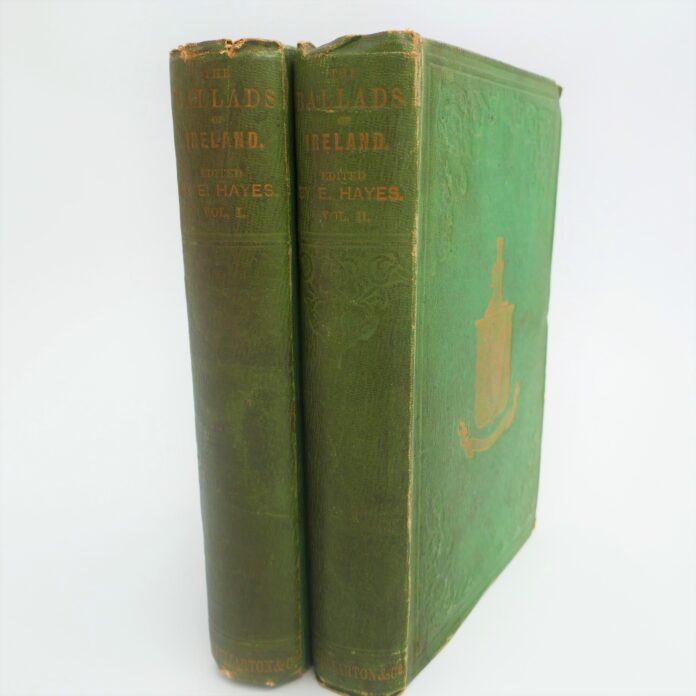
A COLLECTION by a Limerick author is among a number of – quite literally – poison pen volumes put in quarantine by France’s national library. The library this week removed two volumes of The Ballads of Ireland by Edward Hayes, published in 1855, along with two other 19th Century books, from its shelves on account of their emerald green covers likely being laced with highly poisonous arsenic.
Having discovered that a number of book binders of the era used arsenic in colouring and binding their books, the library is concerned that handling the books could pose danger of burns and other consequences for librarians, researchers, and collectors.
The Ballads of Ireland collections are the work of Limerick author Edward Hayes, and rare copies now change hands in antiquarian circles for €200 or more, depending on their condition.
The Boston Pilot newspaper of May 31, 1856, heaps praise on the Limerick writer’s collections, describing him as “singularly enough for a man of such keen postic relish, a successful stock-broker in Leeds, until a year past, when he emigrated with C G Duffy, Wilson Gray, and other hopeful Irishmen, to Australia.
It continues that he “was well versed in the Irish tongue, and otherwise well educated”.
“His preface gives a just idea of his wide range of reading both in classics and belles lettres (sic). In the flush times of English railroad stock, he spent many a hundred pounds on books and pictures, always preferring and seeking such as related to Ireland.”
Among the ballads preserved for posterity by Hayes is one still familiar today, ‘The Croppy Boy’.
The volumes in the Paris Library were printed in Britain have been taken away for further analysis.
“We have put these works in quarantine and an external laboratory will analyse them to evaluate how much arsenic is present in each volume,” a spokesperson for the Paris Library said.
The institution identified the offending copies after US researchers discovered publishers in the Victorian era had used the chemical to colour book bindings.
The arsenic-containing green pigments were called Paris Green, Emerald Green or even Scheele’s Green after a German-born chemist.
Testing hundreds of book covers for heavy metals since 2019, researchers at the University of Delaware have drawn up a list of potentially dangerous volumes as part of the Poison Book Project.
The French library found its collection of more than 16 million titles included just four copies of books on the list.
While it’s thought that injuries which might be caused by coming into physical contact with the books might just involve minor skin burns, ingesting inorganic arsenic, mainly through drinking water and food, can lead to skin lesions and cancer.


